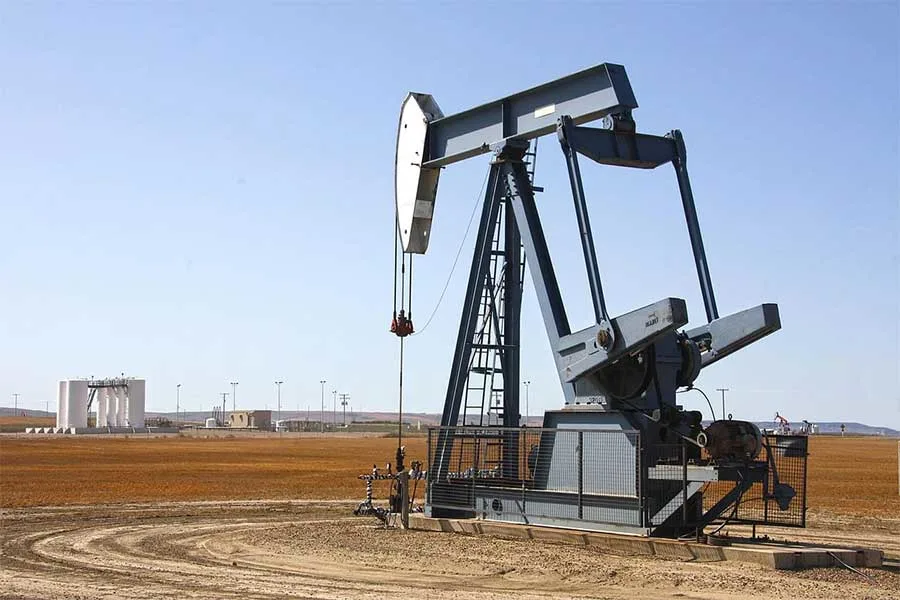Energy consultancy sees planet warming by 2.6 degrees in base scenario
Shifting energy priorities are helping put the world on a path to warm by 2.6 degrees Celsius by 2060, according to energy consultancy Wood Mackenzie.
The change in priorities has come amid geopolitical tensions and rising power demand driven by developing nations and artificial intelligence, WoodMac said in its seventh annual Energy Transition Outlook Report, released on Wednesday
Meanwhile, WoodMac also pushed its peak oil demand projection back by two years, or until 2032. The consultancy said demand should top out at 108 million barrels per day that year.
Demand for natural gas should continue growing well into the 2040s, even approaching 5 trillion cubic metres in the highest possible scenario, because of its importance in power generation, the report said. Gas is still being used as a “bridge fuel” in developing nations where coal reigns and renewables struggle.
The report outlines scenarios where the planet could warm anywhere from 3.1 degrees to 1.5 degrees Celsius — the target established by the Paris accords a decade ago — over the next 35 years, depending on global energy policies and clean energy investment levels.
The 2.6-degree projection is WoodMac’s “base case”. That figure is up 0.1 degrees Celsius from last year’s report.
WoodMac also extended its latest transition outlook to 2060, 10 years beyond the 2050 target that has become commonplace for net zero energy industry goals, amid uncertainty regarding the path of global energy policy.
A ‘critical inflection point’
The pathway to the 1.5-degree limit “is looking increasingly unlikely and out of reach”, said Prakash Sharma, vice president of research for WoodMac and the report’s lead author.
That scenario would require investments of $175 trillion in cleaner, more efficient energy systems, compared to $130 trillion in the 3.1-degree outlook.
Reaching the 1.5-degree target would also require a grid that generates 96% of its power from renewables, compared to 82% in the 3.1-degree case.
The world is facing a “critical inflection point” as traditional decision-making for energy policy has become “dangerously obsolete”, Sharma told reporters in a briefing about the energy transition report.
However, energy demand is still on a “relentless upward trajectory” as populations expand, poor nations develop and AI proliferates, he said.
“The world now confronts an energy landscape of unprecedented complexity, where emissions trajectories continue to change, emissions continue deteriorating, climate targets drift further from reach, and market volatility has reached extraordinary levels,” Sharma said.
No nation on track
As of now, no Group of Seven (G7) nation is on track to meet its 2030 emissions goals, though some European nations are close and China is decarbonising “very quickly”, Sharma said.
WoodMac is predicting global emissions will peak in 2028 before declining by 2% annually in its 2.6-degree base case. The consultancy had predicted peak emissions by 2027 in last year’s report.
The war in Ukraine threatened the energy security of a global grid that generates 80% of its power from oil, gas and coal, and recent tensions in the Middle East added to those security fears, Sharma said.
However, renewables have increased their share of the power mix from 5% to 20% over the last decade, and that figure should increase to 60% by 2050, Sharma said.
In addition, oil, gas and coal have seen their share drop 10% in the last five years, said Jom Madan, principal research analyst for WoodMac and another report author.
Any future shift in oil demand will depend on how quickly markets continue to adopt electric vehicles over fossil fuel-powered cars, Madan said.
“Those assumptions are underpinned by how fast China, Southeast Asia, India and Africa adopt EVs,” he said. “Do they continue with the status quo, or do they leapfrog ahead to EVs, build up domestic renewables to avoid oil imports? That’s the strategy China has chosen, and we’re seeing policymakers grapple with this in other developing markets [where they] elect domestic resources as well.”
Data centre dash
Meanwhile, the greatest challenge facing power grids is data centres, which are being built “at breakneck speed”, said Lindsey Entwistle, WoodMac principal research analyst and another report author.
By the end of 2025, data centres will consume 700 terawatt hours globally, triple the demand for EVs, Entwistle said. That figure is expected to double in the next five years.
“The surge in demand is straining grids worldwide, creating a real threat of electricity crises and blackouts, driving up prices and delaying 2030 clean energy commitments,” Entwistle said.
“But the story isn’t the same across the globe, as we do see China more able to absorb demand within its rapidly expanding grid and rapid renewables rollout. But in the US and Europe, long lead times for grid equipment, permitting, and new energy project developments mean that data centres are now competing directly with households and industries for scarce capacity.”
“When you share your news through OGV, you’re not just getting coverage – you’re getting endorsed by the energy sector’s most trusted voice.”















